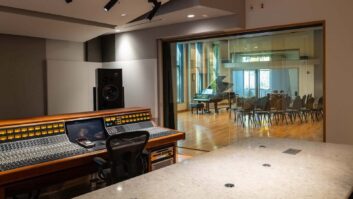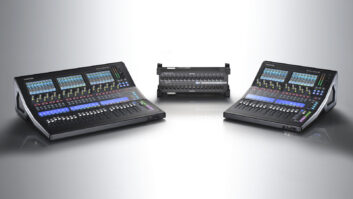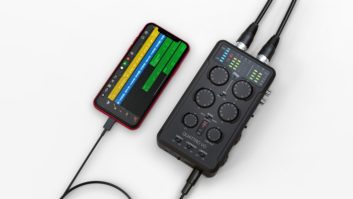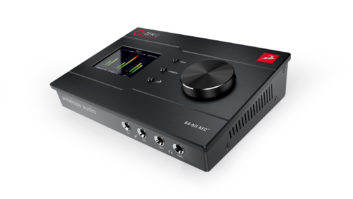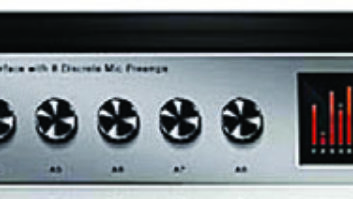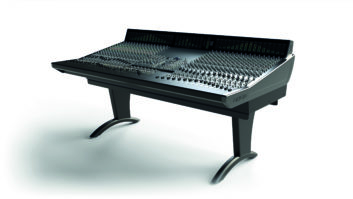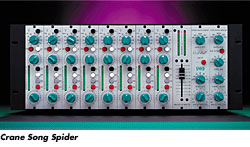
Once considered an anomaly, multichannel mic preamps are becomingmore commonplace. Why? The reasons are many, but certainly among themare a resurgence in live tracking, an increased demand for surroundproduction, and the convenience of compact, remote location recordingpackages. Multichannel preamps often present an ideal solution in theconsole-less studio environment, where DAW mixing is done onscreen andthe “console” doesn’t have preamps at all! But perhaps thebiggest reason for the popularity of outboard preamps stems from userslooking for a different (or improved) performance over the stockpreamps in their consoles.
We decided to look at the current crop of top-of-the-linemultichannel preamps, priced from under $1,000 up to $28,000. Someoffer amenities such as remote-control capability, allowing the preampsto be situated near the mics, while affording the ease of fingertipgain control from the control room or recording truck; some includedigital outputs (either as standard or optional offerings); and othershave the good old analog outs we’re accustomed to using.
This article focuses solely on units with four or more channels,although it should be noted that most manufacturers of single- anddual-channel preamps — such as Apogee Digital, Avalon Design,Martech, Speck Electronics and Summit — can package their preampsinto multichannel rack solutions. We’ve limited the scope of this guideto stand-alone products, so preamp/front ends designed to be usedexclusively with computer-based systems — such as the ESI MAXIOor MOTU 896 — are not covered here.
The latest addition to AMS Neve‘s (www.ams-neve.com)line of inline and outboard gear is the 1081R Remote Microphone Rack, asharp stand-alone version of the company’s 1081 channel amplifier firstintroduced in 1972. This rig can interface directly with the company’sEncore Automation Computer and 88R mixer for full control from theboard, and an optional PC remote-control software package is availablefor staying in touch with the 1081R rack. Transformer-balanced XLR micinput to balanced line output is provided via the unit’s multiwayVaricon rear-panel connector. Up to 12 1081R modules fit into the 4U“intelligent” rack housing, which provides front-panelcontrols over gain, phantom power, pad, phase reverse and a Bypassbutton that routes XLR inputs direct to the outputs.
Put eight preamps, remote MIDI control, wordclock, and analog anddigital outputs into two rackspaces and you’ve got something akin tothe Aphex (www.aphex.com) Model 1788 Remote-Controlled MicPreamp ($4,995 with control software; $5,990 with optical digital outs;and optional remote-control unit, $1,495). Employing an audio DACapproach to lower-stepped gain resolution when the optional controlleris being used, the Model 1788 can also be controlled by any devicesending MIDI. Up to 16 units and 128 channels can be controlled by onecontrol line using the RS-422 output to daisy-chain devices. Thecompany’s limiter circuit on the front end can limit mic output levelsby as much as -20 dB, and the 1788’s digital outputs appear on two DB25connectors (AES/EBU and TDIF) and optical Toslink for ADATconnectivity.
API (www.apiaudio.com) has long been known for itspreamp and EQ modules, such as the $795 512C mic preamp/DI input card,which can be mounted in consoles, an outboard 500V 10-module rack orthe popular 4-slot 500B4 “Lunchbox.” API also offers themore compact 212L preamp card ($695), which has 4- and 12-module rackhousings available. The latest multichannel preamp from the company isthe 3124+, a 4-channel unit that packs the same preamp used in all APIconsoles into a single-rackspace chassis. The 3124+ retails at $2,795and is also available as the 3124MB+ ($3,695), which is similar butadds a 4×2 stereo mixer with aux send and stereo aux return.
ATI (Audio Toys Inc., www.audiotoys.com) reissued its 8MX2 MicPreamp/Mixer ($2,995), which combines eight ATI high-voltage micpreamps with limiters and an 8×2 line mixer into a singlerackspace. Stereo bus mixing with full monitoring capabilities andindividual level, pan, limiter and phantom power controls per channelare possible. The 8MX2’s cue system allows input, attenuable pre/postlimiting or line-return monitoring. A multipin input to the mixer’seight line returns and a multipin output are perfect for monitoring,mixing or recording DAW and MDM tracks. A front-panel headphone jack,rear-panel monitor/cue output and fully balanced outputs are alsostandard equipment on each born-again 8MX2.
Unveiled at Musikmesse 2003, but not shipping until later this year,is the Behringer (www.behringer.com) UltraGain Pro-8 Digital ADA8000,a single-rackspace chassis with eight channels of AD/DA conversion,eight mic preamps, eight XLR analog outs and ADAT Lightpipe I/Os. Theunit offers 24-bit 44.1/48kHz operation and includes BNC wordclock syncand both XLR mic and ¼-inch line inputs.
Besides “conventional” rackmount multichannel micpreamps — such as its MPS-400/420 models — BenchmarkMedia Systems (www.benchmarkmedia.com) offers a huge range ofmodular systems based on a variety of plug-in analog and digitalmodules, such as digital converters, mic preamps, distribution amps,mixers and routers. The System 1000 is a rack frame with 10 or 12 inputmodules, and accessory daughterboards add other functions to themodules, such as remote gain or mono/stereo mode control. Thesingle-channel, $400 MDA-101PA is a high-performance mic preamp (withspecs like 160kHz bandwidth and -130dBu EIN) that can drive up to 10line-level outputs. It’s also available as the $415 MDA-101PA-ra preampmodule with remotely controlled attenuation. A MDA-102PA dual-micpreamp module with similar specs but only five line outputs/channel is$495, and a remote attenuation version of that module is $520.Benchmark also offers the MicroFrame Series, which packs up to 16 ofits $230 MP-2 preamp modules into a single-rackspace frame.
CLM Dynamics (dist. in the U.S. by Wave Distributions, www.wavedistribution.com) offers the DB8000s, athree-rackspace unit with eight independent preamps and ADAT Lightpipedigital outputs. Additionally, three analog outputs from each channelenable the DB8000s to act as an active mic splitter when multiple feedsare required for broadcast, recording or live sound. Each channel alsohas hi-Z inputs, allowing direct injection of instruments or otherline-level signals. Onboard mid/side decoding is supported, using pairsof channels. Each preamp also has a (switchable) SoftStop protectioncircuit with variable threshold to prevent overloads, and these arelinkable in pairs to prevent image shifting in stereo or surround soundrecordings.
For a song and $7,500, consider the Crane Song (www.cranesong.com)Spider, an 8-channel preamp that provides stereo analog and 8-channeland stereo digital outputs. Low-noise, high-quality discrete Class-Apreamp and digital converter modules are used, the latter including aDSP process for tape emulation. Spider’s preamps are similar in designto the company’s 2-channel Flamingo mic preamp, providing pan controlfor the stereo output bus, phase and phantom power switches, a low-cutfilter, and 16-segment signal meter LEDs from 6 to 66dB gain in 6dBsteps. Analog dither control between 15 and 24 bits; sample-rateselection up to 96 kHz; and AES, ADAT optical or TDIF outputs areavailable in the Spider’s digital output section, as well.
Curtis Technology‘s (www.curtis-technology.com) $3,495 Opre8 has eightchannels, each with 10-segment LED VU meters and backlit buttons for-20dB pad, phantom power and phase reverse. The power supply is atorroidal design with distributed dual-voltage regulation to minimizecrosstalk. Each channel features a separate digital circuit controllingrelays within the main analog path, and each channel on the Opre8 hastransformer-balanced inputs and electronically balanced outs.
Designed as an optional offering for Digidesign‘s (www.digidesign.com) 96/192kHz Pro Tools|HDenvironment — but also usable stand-alone with an external MIDIcontroller — the $2,495 PRE features eight discrete,matched-transistor, hybrid preamp circuits. PRE accepts nearly anyinput signal — mic, line and direct DI level inputs — onall eight channels. Its comprehensive remote-controllable operationfrom the Pro Tools software interface or Digidesign control surfacesallows PRE to be placed anywhere in the studio with full parameteraccessibility.
Earthworks’ (www.earthworksaudio.com) 1024 ZDT preamp ($3,500)is a low-noise unit touting a total overall distortion less than0.0001% at its balanced, stepped differential outputs. The 1024’shigh-input impedance of 100k-ohms makes it ideal for use with ribbonmics. Features include clip LED indicators, a standby switch thatmaintains 48V phantom while muting a channel and a frequency responseof 1 to 200k Hz (±0.5 dB).
The 8-channel Focusrite (www.focusrite.com) Class-A ISA 428 Pre Pack ispotent yet tidy. ISA 428 Pre Pack supports four channels of 192kHzperformance when its optional A/D conversion card is installed. Anideal multichannel front end for any professional DAW, the Pre Packsports four classic Rupert Neve-designed transformer preamps withswitchable impedance and direct instrument inputs. Retail is $1,995.The company also offers the $1,169 OctoPre, a single-rackspace,8-channel preamp in its Platinum line.
The 8304 4-channel preamp ($2,900) from George MassenburgLabs (www.gmlinc.com) is a transformerless unit withall-discrete, bipolar, transistor circuit topology for increasedtransparency and lower noise. The single-rackspace unit is hand-builtin limited production runs and requires the GML 8355 external powersupply. The 8304’s outputs are direct-coupled; 15 dB to 70 dB of gainis front panel-selectable in 5dB steps, and no FETs, ICs orelectrolytic capacitors are used in the unit’s signal path.

Grace Design‘s (www.gracedesign.com) Model 801 ($4,795) is asolid-state, 8-channel mic preamp that uses a Class-AB design. Thefront panel includes illuminated phantom, phase and -20dB pad switchesand rotary 24-position gain switches with an 18- to 64dB gain range in2dB steps. Also available is the Model 801R ($4,995), an 8-channelpreamp featuring the company’s proprietary LNLD (Low Noise LowDistortion) digital gain-control cell that can be digitally controlledby an optional $995 RCU (remote-control unit). Up to eight model 801Rs(64 channels) can be controlled from up to 1,000 feet away.
The MP-4 Standard ($2,899) from Great River Electronics (www.greatriverelectronics.com) is a 4-channelpreamp employing a transformer-coupled, Class-A discrete design. Eachchannel features a -15dB pad, polarity control and +48VDC phantomswitches, and a 24-position gain switch. All connections aregold-plated XLRs. Versions of the MP-4 Standard with outputtransformers (MP-4M; $3,499) and unbalanced pigtails are alsoavailable.
First introduced in 1987, the M-1 mic preamps from The John HardyCompany (www.imjohn.com/JohnHardy) are available in avariety of models, including 4-channel rackmount versions. The M-1 andthe M-2 (which is similar to the M-1, but offers a 16-position gainswitch with 1% metal-film resistors for accurate, repeatable settings)are available with one to four channels, and they feature JensenJT-16-B input transformers, 990 discrete op amps and no capacitors fromthe signal path. A 4-channel M-2 with the optional VU meter and JensenJT-11-BMQ output transformers is $3,085.
Joemeek‘s (www.joemeek.com) recently announced JM828 8×2Channel microphone preamp ($999.99) is the first Joemeek unit producedunder the new ownership of the PMI Audio Group. Features include anexternal power supply, a stereo L/R output control (in addition toseparate ¼-inch line outs for each channel), a headphone jack withvolume control, L/R LED meters and a solo LED for monitoring. Each unitalso features an in/out expansion port to cascade up to 32 inputs tothe L/R master.
Marquette Audio Labs (www.marquetteaudiolabs.com) custom builds itsmultichannel preamp packages, including the Telefunken V672 4-Channel($2,600 to $3,000) and Langevin AM16 4- and 6-Channel ($3,000 to$4,000) offerings. The Telefunken V672 uses custom vintage Telefunken’60s Class-A discrete mic preamps, housed in a three-rackspace chassiswith custom-engraved faceplates for pad, phase, gain and 48VDCswitches; Cinemag DI transformers are optional. The Langevin AM16“6-Pack” is a custom 6-channel version of the same packagewith an internal power supply. (External PSU is optional.) MAL’sTelefunken V672 modules are discrete, solid-state versions of the V72.Both packages include input pad, variable gain control, phase reverse,and phantom on/off controls and XLR I/O per channel.
The HV-3D from Millennia Music (www.mil-media.com)retails at $2,995 for four channels or $3,995 for eight channels, andis built on the same design as the company’s TEC Award-nominated HV-3solid-state preamp circuitry. The HV-3D features high-resolution gainswitching (36 steps at 1.5 dB per step), a passive summing option andoptional powering for 130V DPA (or B&K) mics. The two-rackspaceHV-3D provides an entirely balanced audio path, requires no input padsand it can reportedly drive 1,000-foot cables without detectable signaldegradation.
The $2,880 OctaSonic Plus from Oram Audio (www.oram.co.uk) is an8-channel unit that uses the same circuitry as the popular BEQ Series24 console. It also incorporates a group delay feature that delays LFcontent with respect to HF content. Oram preamps handle a hot +22dBuinput and boast an 18- to 73kHz bandwidth. When used together with anOram OctaMix or OctaFade, the OctaSonic also provides a stereo output8-channel mixer for live sound, broadcast and theater applications.
The two-rackspace PreSonus (www.presonus.com) M80 ($2,299.95) is an 8-channelmic/instrument preamp with balanced input transformers, anultralow-impedance mix bus for assigning and panning any channel to themain stereo output connectors, and a high-gain headphone output formain bus. The M80 also allows adjustment of a signal’s even harmonicsfor tape and tube-saturation emulation.
RME (dist. by X-Vision Audio, www.xvisionaudio.com) offers both QuadMic andOctaMic preamps, both featuring the option of battery-poweredoperation. More than just a dual QuadMic, RME’s top-of-the-line OctaMicis an 8-channel unit with a discrete Class-A design and provides specssuch as 129dB EIN and a 5 to 200k Hz (-0.5dB) bandwidth. Each channelhas switches for 48VDC phantom, low-cut filter and phase reverse.Outputs are balanced TRS (switchable to -10 dBV, +4 dBu or +21 dBu) anda 25-pin D-sub connector for a direct, one-cable connection to RME’s8-channel A/D converters. It’s due out this month.
The ($472/single-channel) SE-Pre 1 from Sage Electronics (www.sageelectronics.com) is a discrete Class-Atransistor preamp series offered in single, dual, 4- and 8-channelconfigurations. The oak or Brazilian purple heartwood front panels havea classic, vintage big-knob audio look. Hand-built, wired and assembledby producer Phillip Victor Bova and family, the SE-Pre 1 hasgold-plated XLR I/Os, 48VDC phantom power and high-voltage externalpower supply.
SPL (Sound Performance Labs, www.spl-usa.com) has two 5-channel offerings thatare ideal for surround audio production. The SPL Atmos 5.1 SurroundMiking System ($27,990, including mic array) sports the company’s newtriple-gain-stage mic preamps and unique motorized master gaincontrols, the latter allowing users to adjust all five channels with asingle control knob. Atmos features Lundahl input transformers, pads,phase reverse, phantom power, low-cut filters, and switchable insertand tape send/returns per channel. Although the Atmos 5.1 accepts anymic input, the Brauner ASM 5 Adjustable Surround Microphone arrayincluded with the Atmos 5.1 package is a perfect companion. If youdon’t need the mics and frills, SPL’s Area 5.1 Surround MicrophonePreamp ($4,599) also has five matched gain-stage preamps with motorizedmaster/slave gain controls.
Whether in the company’s second-generation, DC-coupled SuperAnalogconsole or as a stand-alone preamp, Solid State Logic‘s (www.solid-state-logic.com) XL SuperPre isconfigurable, with each unit supporting up to 24 preamps via modularcards providing four inputs each. Total Recall is integrated with theXL SuperPre, and stepless remote gain control is provided viaservo-driven motorized potentiometers. Each channel provides -20dB pad,+48V phantom power and impedance switching for handling line and micinputs. Housed in a stage box design with minimal depth dimensions, theXL SuperPre can also be remote-controlled with the company’s optionalSuperPre Remote.
The four preamps in Sytek‘s (www.sytek-audio-systems.com) A-SYS MPX-4A use aClass-A, Auto-Bias Bridge configuration, hybrid-input stagepreamplifier for low -134dB EIN (50-ohm) performance, and a stated 10to 85k Hz (±0.25dB) response. The $1,678 unit also includes auseful Mute function in addition to the usual 48VDC phantom and phaseswitching. The company also offers the A-SYS MPX-4D, with similarperformance, but in a $2,860 digitally controllable package. UnderMS-DOS software or Windows 3.1 (or higher), up to 256 MPX-4Ds aresupported in a single user package, as a true AES15 standard PA422interface or simple RS232C. Future developments will support Mac andMIDI interfacing, which will be free to registered users.
TL Audio‘s (dist. by HHB, www.hhb.co.uk) Ivory2 5001 4-channel tube preamp($749) provides four quality discrete tube mic preamps in atwo-rackspace chassis. Separate input and output level controls, -30dBpad, 90Hz low-cut filter, phase reverse and phantom power are standard.Drive- and signal-level LEDs and DI inputs are offered, and there’s anoptional 4-channel 24-bit digital output upgrade. Each channel of theIvory2 5001 uses one-half of an ECC83/12AX7A Sovtek dual-triode valverun from a 150VDC supply, and the unit’s valve stage is positioned justafter the initial discrete mic preamp stage.
The Precision 8 ($2,850) from True Audio Systems (www.true-systems.com) elegantly fits eightsolid-state mic preamps into a single-rackspace unit, and then some.Two FET direct inputs are available, and the Precision 8’s built-in M-S(Mid-Side) decoding allows for creative spatial image and stereocontrol without readjusting mics or settings. Five-segment levelindicators with peak-hold feature and selectable peak reference allowrapid optimization of program levels between the Precision 8 and otherdevices. Also included are continuous gain controls, dual DB25/TRSoutputs and a totally balanced dual-servo design that is DC-coupled atthe output.
Vintech Audio (www.vintech-audio.com) is now shipping its 473($3,195; external power supply, $150), a 4-channel, Class-A discreteunit that features four Neve 1073-style mic preamps with EQ on everychannel. EQ frequency choices are 3.2 kHz and 12 kHz for the highs and60Hz and 220Hz low-shelving, and customers can special-order units atother EQ frequency settings. Each channel also offers aninput-sensitivity adjustment allowing up to 70 dB of gain, an inputimpedance switch, a mic-line switch, an instrument input, and switchesfor phantom power, phase reverse and EQ on/off.
Housed in a two-rackspace chassis, the AD824 from Yamaha (www.yamaha.com/proaudio) is an 8-channel,remote-controllable mic/line amplifier. The rear panel has eight analogXLR inputs, eight TRS balanced insert-in and -out jacks (the latteralso doubles as direct recording outputs), BNC wordclock I/O and aMini-YGDAI output slot, which accepts optional cards for 44.1/48kHz,16/20/24-bit multichannel digital outputs in ADAT Lightpipe, AES/EBU orTascam TDIF formats. Remote-gain trim control of one or more AD824s ispossible from a Yamaha DME32, PC or other device connected to theunit’s COM PC/RS-422 ports.
Randy Alberts is a San Francisco Bay Area-based technical writer,musician and composer.


